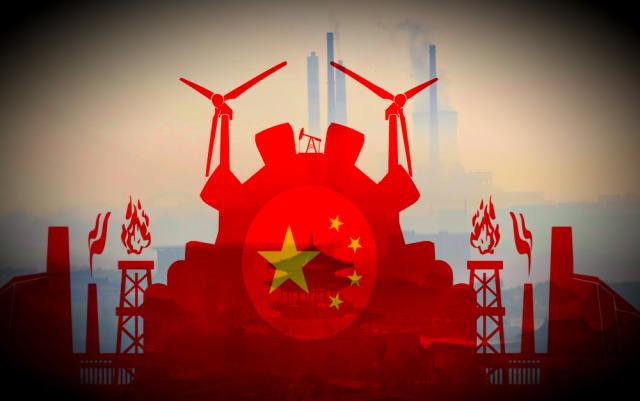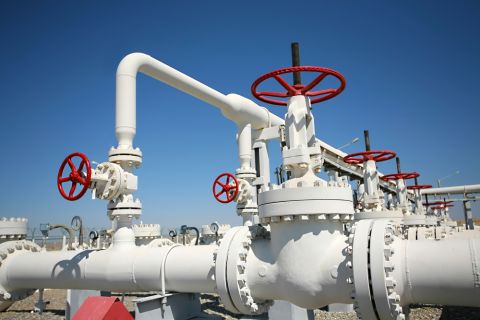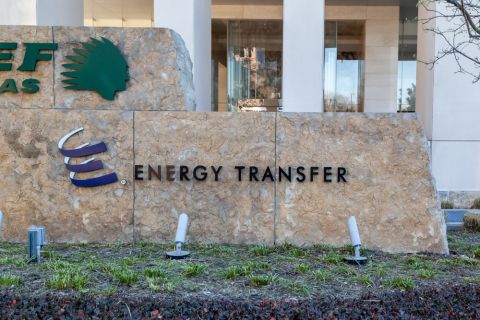
The future of energy starts with what’s happening in Asia, not what’s happening in the U.S. or Europe, said Ken Medlock during a presentation at the NAPE Global Business Conference. (Source: Shutterstock.com)
In the U.S., oil company investors have certain expectations about when and how operators reach certain sustainability goals—reaching net-zero carbon emissions and transitioning to renewable sources of energy, just to name a couple. However, according to Kenneth B. Medlock III, director and fellow at the Center of Energy Studies at Rice University’s Baker Institute, the real energy transition to watch is how different countries are developing their energy resources.
“If you think about the future of energy, it starts with what’s happening in Asia, not what’s happening in the U.S. or what’s happening in Europe,” Medlock said during a presentation at the NAPE Global Business Conference on Aug. 18.
“The OECD represents about 1.3 billion people today; China, the ASEAN region and India about 3.4 billion—massive rates of economic growth, very large population growth rates that are still positive,” he added.
The OECD, consisting of North America, Europe, Japan, South Korea, Australia, New Zealand and Chile, is a grouping of the wealthiest countries in the world, as well as “the driver of pretty much all geopolitical discourse for the last 120 years,” according to Medlock. Even though non-OECD countries in sub-Saharan Africa and Latin America live without access to modern energy services, data shows their energy demand surpassing that of OECD nations since 2006.
“Interesting thing about the OECD is that energy demand has not increased in the last decade. As a matter of fact, 15 years ago, the non-OECD eclipsed the OECD in terms of energy use for the first time ever, and it has never looked back,” Medlock said. “When you start to internalize that, you think about the world of energy as a world of haves and have-nots—the OECD and the abysmally poor—you start to realize that nowhere is going to look the same; nowhere looks the same now.”
However, everything changed about 25 years ago with the induction of China into the group after its unprecedented rise to financial and industrial power. In his NAPE presentation titled “The Bat Impact,” Medlock summed up the main drivers of energy transition to the shale revolution in the U.S. and the subsequent demand growth in Asia. With all the industrial growth in China and Southeast Asia in the past few decades, Medlock insists the future of energy transition rests with them.
Though different countries have varying approaches to energy transition, one commonality Medlock has seen is a shift to lasting, durable infrastructure. In the non-OECD countries with high energy demand, the infrastructure hasn’t yet reached its full potential.
“In the non-OECD, the rate of growth you’ve seen since the early 2000s in total energy use should tell you something about the age of the infrastructure in that part of the world,” Medlock said. “It’s pretty young, which means it’s not going to get retired tomorrow, which means those energy uses that you see there, they might not grow as rapidly—in fact they won’t—but they’re not going to shrink dramatically either.”
“In the OECD, the story’s a little different. That stuff was typically built with a design life of 40 years,” he added. “Policy is going to play a shaping role in what happens with that. It has a choice: it can either upgrade and retrofit, or it can retire and get replaced.”
To keep the U.S. in the competitive energy market, policymakers are keeping a close eye on China, as its rapid development has not gone unnoticed. According to Medlock, certain pieces of legislation target China specifically to keep them from advancing past the U.S. in the energy industry, including an infrastructure bill that demands “for a closer look at the use of slave labor in China.”
“No matter what your approach to U.S. energy, do not underestimate the China factor. Make no mistake, everybody on Capitol Hill thinks about China a lot,” Medlock added. “When you start to think about what growth in certain types of energy resources mean in different parts of the world, just keep that in your mind because China right now controls about 80% of the world’s lithium processing capacity. Don’t underestimate that when you’re thinking about the future of energy.”
Medlock’s main takeaway from the presentation was that regardless of what the energy transition looks like in the U.S., it won’t look like in other places around the world due to different governments and policies and different resources readily available. Rather than have one cohesive approach to energy transition, there will instead be hundreds.
“You can’t take the U.S. situation and superimpose it in China or India because the reality on the ground is just very different,” Medlock said. “How those systems evolve in different places in the world, it’s going to look different. When we talk about transitioning energy systems and how they’re going to evolve, the world of energy in one place around the globe is going to look very different 30 years from now than it will in another.”
Recommended Reading
Wayangankar: Golden Era for US Natural Gas Storage – Version 2.0
2024-04-19 - While the current resurgence in gas storage is reminiscent of the 2000s —an era that saw ~400 Bcf of storage capacity additions — the market drivers providing the tailwinds today are drastically different from that cycle.
Ozark Gas Transmission’s Pipeline Supply Access Project in Service
2024-04-18 - Black Bear Transmission’s subsidiary Ozark Gas Transmission placed its supply access project in service on April 8, providing increased gas supply reliability for Ozark shippers.
Kinder Morgan Sees Need for Another Permian NatGas Pipeline
2024-04-18 - Negative prices, tight capacity and upcoming demand are driving natural gas leaders at Kinder Morgan to think about more takeaway capacity.
Scathing Court Ruling Hits Energy Transfer’s Louisiana Legal Disputes
2024-04-17 - A recent Energy Transfer filing with FERC may signal a change in strategy, an analyst says.
Balticconnector Gas Pipeline Will be in Commercial Use Again April 22, Gasgrid Says
2024-04-17 - The Balticconnector subsea gas link between Estonia and Finland was damaged in October along with three telecoms cables.




